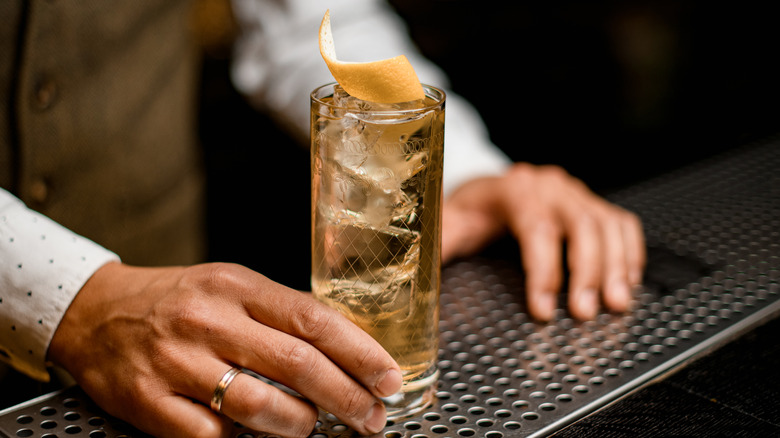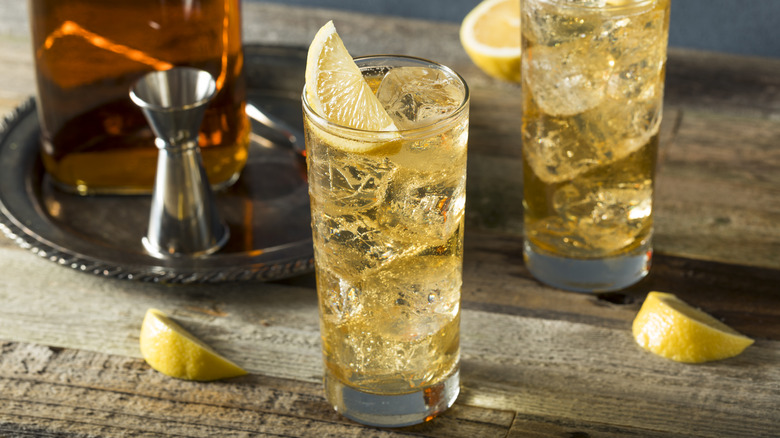Why The Whisky Highball Is So Popular In Japan
Highballs can be a bit difficult to define, acknowledges Provi, but in Japan, the drink is an art form. The drink's name is derived from the metal ball that would signal a train could move forward; the ball inside a steam train's water tank would elevate when the train had enough power to move, and the conductor would whistle — two short whistles and one long one — to let the crew know it was time to go, explains Chilled magazine. This conductor code parallels the standard drink recipe for concoctions in the highball's boozy, bubbly category: two parts soda water and one part spirit.
The highball family encompasses any cocktail that has been mixed with a spirit, mixer, and ice, clarifies The Back Label; think gin and tonics or scotch and sodas. Where exactly the actual drink originated is as hazy as one might feel after downing several of these fizzy beverages, but in Japan, you can find whisky highballs sold out of vending machines and carefully constructed in upscale cocktail bars.
Whisky highballs pair well with meals
For many Japanese bartenders, assembling a highball is close to a science: The temperature, glass size, type of ice, and mixers used are carefully considered, notes Provi. Some even count the number of times the drink is stirred. The Manual explains that highballs often take the place of beer in social settings and can range from $3 to $5 per drink; since drinks served before or after dinner aren't customary, drinks with lower alcohol ratios are preferred, so they can be enjoyed with a meal.
Additionally, The Back Label attributes the habit of drinking while eating to the rise of the highball's popularity, as drinking whisky straight during dinner or lunch can prove to be a challenging task. Adding a bit of soda water and ice makes harder spirits a bit easier to put back. Plus, after World War II, people wanted to drink affordably, and highballs were the answer for cost-effective booze.
Want to experiment with whisky highball recipes at home? Don't forget to adorn your alcohol with the perfect garnish. Diageo Bar Academy explains garnish acts as a visual symbol that helps differentiate this drink from a basic Scotch and soda. Kind of like a conductor's whistle letting people know the train is ready to leave.

